-
 The mystery of the Man behind the Iron Mask has intrigued people for over 250 years, inspiring as much fantasy as serious conjecture. This is the story of the story, so to speak; an account of the theories and counter-theories, from the claim that he was the twin brother of Louis XIV to the recognition that he was Eustache Dauger, with diversion by way of such candidates as the Duke of Monmouth, Richard Cromwell, Molière, Nicholas Fouquet, an Armenian archbishop, an Italian astrologer and many more. Complete and comprehensive, this is a presentation of all the known facts of the prisoner's existence chronologically, as they have been discovered, together with all the myths as they have flourished from the preposterous stories put about by his gaoler in 1669 to the alleged discovery of his skeleton in a tower in Cannes in 1977. As the various stories are revealed, the reader may accept or reject the assorted evidence and develop his own views before the author presents his own conclusions. Illustrated.
The mystery of the Man behind the Iron Mask has intrigued people for over 250 years, inspiring as much fantasy as serious conjecture. This is the story of the story, so to speak; an account of the theories and counter-theories, from the claim that he was the twin brother of Louis XIV to the recognition that he was Eustache Dauger, with diversion by way of such candidates as the Duke of Monmouth, Richard Cromwell, Molière, Nicholas Fouquet, an Armenian archbishop, an Italian astrologer and many more. Complete and comprehensive, this is a presentation of all the known facts of the prisoner's existence chronologically, as they have been discovered, together with all the myths as they have flourished from the preposterous stories put about by his gaoler in 1669 to the alleged discovery of his skeleton in a tower in Cannes in 1977. As the various stories are revealed, the reader may accept or reject the assorted evidence and develop his own views before the author presents his own conclusions. Illustrated. -

 The bushranging days of the nineteenth century are brought to life - the time when audacious gangs won notoriety by their crimes. This book vividly depicts the dark legacy of the convict system for both men and women, the stirring times of exploration and pioneering development, the hectic gold rushes and the riots they provoked - all the turmoil of life in a tough, rough, new country. Illustrated by Ralph Warner.
The bushranging days of the nineteenth century are brought to life - the time when audacious gangs won notoriety by their crimes. This book vividly depicts the dark legacy of the convict system for both men and women, the stirring times of exploration and pioneering development, the hectic gold rushes and the riots they provoked - all the turmoil of life in a tough, rough, new country. Illustrated by Ralph Warner. -
 Here are the daring, dastardly and foolhardy crimes that rocked colonial Australia. This book tells of the exploits of the gold-diggers, con-men, and murderers in chapters enticingly titled: The Gold Pirates; The Man Who Was Starlight; The King Of New France; A Scandal in Bohemia and much more. Contains black and white illustrations of Martin Wesiberg, 'New France', the world's richest mousehole and more. Originally published as Rogues' March.
Here are the daring, dastardly and foolhardy crimes that rocked colonial Australia. This book tells of the exploits of the gold-diggers, con-men, and murderers in chapters enticingly titled: The Gold Pirates; The Man Who Was Starlight; The King Of New France; A Scandal in Bohemia and much more. Contains black and white illustrations of Martin Wesiberg, 'New France', the world's richest mousehole and more. Originally published as Rogues' March. -
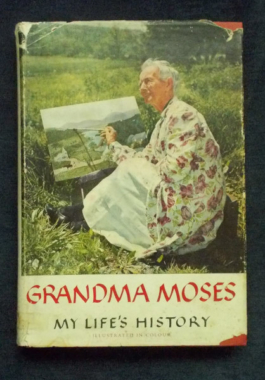 When Anna Mary Robertson Moses, a farmer's widow, was seventy eight, she found that her hands were too stiff to sew fine embroidery. Her sister Celestia suggested that she might try painting instead. The rest really is history. This book was written when she was 92 and still going strong. Her ability to portray simple farm life and rural countryside won her a wide following: the excitement of winter's first snow, Thanksgiving preparations and the new, young green of oncoming spring. In person, Grandma Moses charmed wherever she went. A tiny, lively woman with mischievous gray eyes and a quick wit, she could be sharp-tongued with a sycophant and stern with an errant grandchild. And apart from her artistic talent, we can learn of her life: starting with her employment as a live-in housekeeper at the age of 12, her marriage and children. A fascinating look at a truly one-of and great lady. Contains 16 full colour reproductions of her paintings.
When Anna Mary Robertson Moses, a farmer's widow, was seventy eight, she found that her hands were too stiff to sew fine embroidery. Her sister Celestia suggested that she might try painting instead. The rest really is history. This book was written when she was 92 and still going strong. Her ability to portray simple farm life and rural countryside won her a wide following: the excitement of winter's first snow, Thanksgiving preparations and the new, young green of oncoming spring. In person, Grandma Moses charmed wherever she went. A tiny, lively woman with mischievous gray eyes and a quick wit, she could be sharp-tongued with a sycophant and stern with an errant grandchild. And apart from her artistic talent, we can learn of her life: starting with her employment as a live-in housekeeper at the age of 12, her marriage and children. A fascinating look at a truly one-of and great lady. Contains 16 full colour reproductions of her paintings. -
 Peter Townsend was a professional airman who adored his work - and when the war came he proved himself to be a brilliant fighter pilot. He seemed set for a distinguished post-war career in the services - but in 1944 it was decided to widen the range from which the Equerries were selected. Group Captain Townsend - in need of a rest from flying - was put forward for the job, becoming the first RAF officer to serve as an Equerry to King George VI. A three month assignment turned into several years, which destroyed his marriage and career and changed the course of his life forever.Townsend portrays his life in the Royal Household - his affection and admiration for the King and Queen; the quirks and qualities of his colleagues; the comradeship; the jokes, jollities and occasional disasters. Above all, he describes his feelings for Princess Margaret with honesty and dignity; a sad, tragic love story of two warm-hearted, intensely human individuals in conflict with the Establishment. Illustrated with black and white photographs.
Peter Townsend was a professional airman who adored his work - and when the war came he proved himself to be a brilliant fighter pilot. He seemed set for a distinguished post-war career in the services - but in 1944 it was decided to widen the range from which the Equerries were selected. Group Captain Townsend - in need of a rest from flying - was put forward for the job, becoming the first RAF officer to serve as an Equerry to King George VI. A three month assignment turned into several years, which destroyed his marriage and career and changed the course of his life forever.Townsend portrays his life in the Royal Household - his affection and admiration for the King and Queen; the quirks and qualities of his colleagues; the comradeship; the jokes, jollities and occasional disasters. Above all, he describes his feelings for Princess Margaret with honesty and dignity; a sad, tragic love story of two warm-hearted, intensely human individuals in conflict with the Establishment. Illustrated with black and white photographs. -

 Jean Devanny (1894 - 1962) - author, political activist, and women's liberationist - was a leading figure in Australia's political and literary life. In the turbulent political climate of the 1930s, Devanny joined the Communist Party and rapidly became a redoubtable public speaker. A fiery figure, she clashed with the party line on events in Europe during World War II and under Stalin and had bitter disputes with party leaders over her “open” marriage and rumored love affairs. Obliged to write novels to support her family, she developed friendships with notable writers Katharine Susannah Prichard, Miles Franklin, and Frank Hardy. Her interest in issues of race, gender and sexuality makes her a writer of great contemporary interest. In this volume she writes of the men and women who live and work on the Queensland coast, in the steaming rain forests, in the cane fields and in the mines. They are people who never dreamed they would be an author's hero or heroine, yet they are; Devanny understood the significance of the many humble lives and the part they played in the overall scheme of our national existence and has here drawn wonderful character studies and 'yarns'.
Jean Devanny (1894 - 1962) - author, political activist, and women's liberationist - was a leading figure in Australia's political and literary life. In the turbulent political climate of the 1930s, Devanny joined the Communist Party and rapidly became a redoubtable public speaker. A fiery figure, she clashed with the party line on events in Europe during World War II and under Stalin and had bitter disputes with party leaders over her “open” marriage and rumored love affairs. Obliged to write novels to support her family, she developed friendships with notable writers Katharine Susannah Prichard, Miles Franklin, and Frank Hardy. Her interest in issues of race, gender and sexuality makes her a writer of great contemporary interest. In this volume she writes of the men and women who live and work on the Queensland coast, in the steaming rain forests, in the cane fields and in the mines. They are people who never dreamed they would be an author's hero or heroine, yet they are; Devanny understood the significance of the many humble lives and the part they played in the overall scheme of our national existence and has here drawn wonderful character studies and 'yarns'. -
 The story of the Australian theatre began inn 1789 when a group of First Fleet convicts mounted a production of George Farquhar military comedy, The Recruiting Officer. Starting from this bizarre performance, this volume chronicles the history of the Australian stage to the 1980s (some of it hardly less bizarre) told in the vivid language of the performers' contemporaries and supported by ten essays by leading theatre historians. From Shakespeare to vaudeville, from establishment to alternative and from the art of the gold-boom tragedians to the problems of mounting plays in converted warehouses in the 1960s, the book draws on an an exhaustive search through old reviews and memoirs, much of which represents important discoveries about the performers and performances of our past. Illustrated with black and white photographs.
The story of the Australian theatre began inn 1789 when a group of First Fleet convicts mounted a production of George Farquhar military comedy, The Recruiting Officer. Starting from this bizarre performance, this volume chronicles the history of the Australian stage to the 1980s (some of it hardly less bizarre) told in the vivid language of the performers' contemporaries and supported by ten essays by leading theatre historians. From Shakespeare to vaudeville, from establishment to alternative and from the art of the gold-boom tragedians to the problems of mounting plays in converted warehouses in the 1960s, the book draws on an an exhaustive search through old reviews and memoirs, much of which represents important discoveries about the performers and performances of our past. Illustrated with black and white photographs. -
 "Learn all you can about the German Army and one day you will be a valuable man to your country." These words were spoken to young Alexander Scotalnd by Major Wade, a British liaison officer in German West Africa in 1904. He never forgot those words. This book covers how much he learnt and how valuable were his services to his country. This young man served in the German Army - at the suggestion of the Germans - for the duration of the Hottentot Rebellion, thereby gaining an intimate knowledge of the organisation and strengths of the German military machine. He grew to know, by close contact, the habits, language and mental outlook of the German soldier. This knowledge was the basis of his achievements in espionage, interrogation and undercover work in two world wars. His reputation led to a strange meeting with Adolf Hitler in 1937, at the home of a mutual friend. His career reached its zenith in 1947 when - as Chief Officer of the War Crimes Investigation Unit, he played a decisive role in bringing Nazi war criminals to justice. Illustrated with black and white photographs.
"Learn all you can about the German Army and one day you will be a valuable man to your country." These words were spoken to young Alexander Scotalnd by Major Wade, a British liaison officer in German West Africa in 1904. He never forgot those words. This book covers how much he learnt and how valuable were his services to his country. This young man served in the German Army - at the suggestion of the Germans - for the duration of the Hottentot Rebellion, thereby gaining an intimate knowledge of the organisation and strengths of the German military machine. He grew to know, by close contact, the habits, language and mental outlook of the German soldier. This knowledge was the basis of his achievements in espionage, interrogation and undercover work in two world wars. His reputation led to a strange meeting with Adolf Hitler in 1937, at the home of a mutual friend. His career reached its zenith in 1947 when - as Chief Officer of the War Crimes Investigation Unit, he played a decisive role in bringing Nazi war criminals to justice. Illustrated with black and white photographs. -
 This collection of essays from the second Whitlam Conference of Labor Historians marks a further important stage in documenting the history of the Australian Labor Party. More than just a record for future generations, it is a handbook for the late 1980s and a guide for those charged with implementing Labor policies for the Australian Government. Topics covered: Aboriginal Land Rights; Education; Health; Reform of the Public Sector and Urban Policy. Contributors: Gough Whitlam; Bob Carr; Sol Encel; Graham Freudenberg; Marc Gumbert; Race Mathews; Tom Uren; Peter Wilenski and Deane Wells.
This collection of essays from the second Whitlam Conference of Labor Historians marks a further important stage in documenting the history of the Australian Labor Party. More than just a record for future generations, it is a handbook for the late 1980s and a guide for those charged with implementing Labor policies for the Australian Government. Topics covered: Aboriginal Land Rights; Education; Health; Reform of the Public Sector and Urban Policy. Contributors: Gough Whitlam; Bob Carr; Sol Encel; Graham Freudenberg; Marc Gumbert; Race Mathews; Tom Uren; Peter Wilenski and Deane Wells. -
 All the stars of the screen are featured in this annual, together with the film releases of the year and all the glamour of the premières attended by Royalty. There's Doris Day, Tony Curtis, Jack Lemmon, Tina Louise, Bob Hope, Yul Brynner and many more. There's articles on horror films, interviews and candid pics of the famous and those who worked behind the scenes. Cover shows Doris Day and Richard Widmark. Illustrated.
All the stars of the screen are featured in this annual, together with the film releases of the year and all the glamour of the premières attended by Royalty. There's Doris Day, Tony Curtis, Jack Lemmon, Tina Louise, Bob Hope, Yul Brynner and many more. There's articles on horror films, interviews and candid pics of the famous and those who worked behind the scenes. Cover shows Doris Day and Richard Widmark. Illustrated. -

 A stunning biography of Frank Winflied Woolworth and his humble origins. After working in a dry goods store, Frank Woolworth borrowed money from his boss to open what would be the first 5-and-10 cent store in 1879. It was not an overnight success - nothing daunted, he repaid the loan to his boss and tried again. This was a more successful effort and when he wanted to open a second store, he brought his brother Charles Sumner into the business. 'Sum' as he was known, spent time on the shop floor, talking to employees and shoppers to find out what was needed or wanted. By 1904 - a scant 25 years - there were six affiliated chains in the United States and Canada. By 1910, Frank had commissioned the design and construction of a pioneering skyscraper, the Woolworth Building in New York City which was the tallest building in the world until 1930. An extraordinary biography.
A stunning biography of Frank Winflied Woolworth and his humble origins. After working in a dry goods store, Frank Woolworth borrowed money from his boss to open what would be the first 5-and-10 cent store in 1879. It was not an overnight success - nothing daunted, he repaid the loan to his boss and tried again. This was a more successful effort and when he wanted to open a second store, he brought his brother Charles Sumner into the business. 'Sum' as he was known, spent time on the shop floor, talking to employees and shoppers to find out what was needed or wanted. By 1904 - a scant 25 years - there were six affiliated chains in the United States and Canada. By 1910, Frank had commissioned the design and construction of a pioneering skyscraper, the Woolworth Building in New York City which was the tallest building in the world until 1930. An extraordinary biography. -
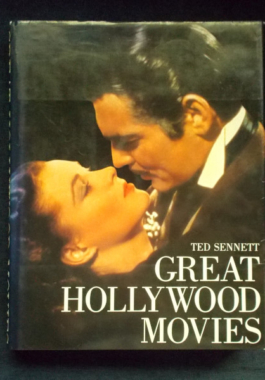 The late film historian Ted Sennett takes the reader on a trip from the beginning of film to the 1980s. He covers all genres: comedy, musicals, romances, westerns, adventure, war, mystery, horror, sci-fi, crime - even society's outcasts. There is also a section on those films that stand alone and those made from books and plays. With over 100 colour stills and images, this is really one for the serious film history buff.
The late film historian Ted Sennett takes the reader on a trip from the beginning of film to the 1980s. He covers all genres: comedy, musicals, romances, westerns, adventure, war, mystery, horror, sci-fi, crime - even society's outcasts. There is also a section on those films that stand alone and those made from books and plays. With over 100 colour stills and images, this is really one for the serious film history buff. -


Ward was a leading player in the Profumo scandal which brought down the Conservative Government 1962. An osteopath and accomplished artist, he was a mover, mixer, stirrer and shaker in upper class circles, mixing with peers and prostitutes singly and together. He was a great name dropper. He had a plausible manner and tons of charm. He was friendly with Captain Ivanov, the Russian Naval attache who was conducting an affair with model Christine Keeler, a friend of Ward's, at the time she was involved in an affair with John Profumo, Minister for War. News of this potentially dangerous tangled involvement reached the ears of the Cabinet Secretary, who had a word with Profumo and the affair ended. The matter may have concluded there, but for Ward's continued association with Ivanov - and his love of playing at politics which brought about his own destruction. Illustrated with black and white photographs. The author was refused a copy of a full or partial transcript by the Court of Criminal Appeal but was able to obtain a transcript through the Press Association.
-
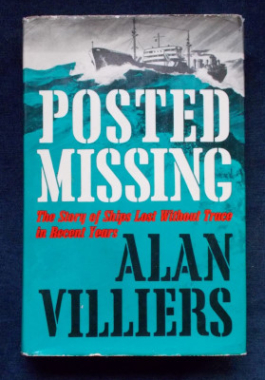 Every year at least one large, well-founded ship and a number of smaller ones are posted missing at Lloyds - from the 20,000 ton Brazilian battleship São Paulo which vanished off the Azores in 1951 down to trawlers like the Kingston Peridot and the St. Romanus. In the interests of research, Commander Villiers has visited the ports from which many of these vanished ships sailed and has had access to official reports and findings. In the new introduction to this edition, he mentions that despite sophisticated communications and efficient methods of sea rescue, seventy merchantmen were posted missing between 1965 - 1975. An authoritative and fascinating book that demonstrates that even now, the oceans still hold enigmas. Illustrated with maps and black and white photographs.
Every year at least one large, well-founded ship and a number of smaller ones are posted missing at Lloyds - from the 20,000 ton Brazilian battleship São Paulo which vanished off the Azores in 1951 down to trawlers like the Kingston Peridot and the St. Romanus. In the interests of research, Commander Villiers has visited the ports from which many of these vanished ships sailed and has had access to official reports and findings. In the new introduction to this edition, he mentions that despite sophisticated communications and efficient methods of sea rescue, seventy merchantmen were posted missing between 1965 - 1975. An authoritative and fascinating book that demonstrates that even now, the oceans still hold enigmas. Illustrated with maps and black and white photographs. -
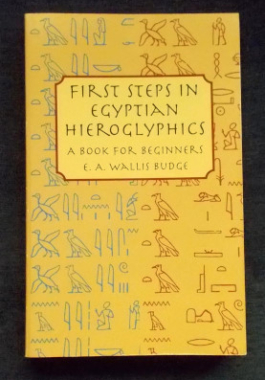 The dearth of suitable introductory texts presents a serious obstacle to the study of the Egyptian language, so this practical grammar answers a longstanding need. Its well-known and highly respected author, a Keeper of the Egyptian and Assyrian Antiquities at the British Museum, has written many other popular Dover books on Egyptology. Contents include lists of frequently used signs and determinatives, a short vocabulary of about 500 words, a series of 31 texts and extracts (with interlinear transliteration and word-for-word translation), and a few untransliterated and untranslated texts (with glossary), to be worked out independently. This is a valuable book for archaeologists, anthropologists, and anyone with a professional or amateur interest in Ancient Egypt.
The dearth of suitable introductory texts presents a serious obstacle to the study of the Egyptian language, so this practical grammar answers a longstanding need. Its well-known and highly respected author, a Keeper of the Egyptian and Assyrian Antiquities at the British Museum, has written many other popular Dover books on Egyptology. Contents include lists of frequently used signs and determinatives, a short vocabulary of about 500 words, a series of 31 texts and extracts (with interlinear transliteration and word-for-word translation), and a few untransliterated and untranslated texts (with glossary), to be worked out independently. This is a valuable book for archaeologists, anthropologists, and anyone with a professional or amateur interest in Ancient Egypt. -

 A group of convicts escape from Norfolk Island in a boat. Only one survives - by killing and eating his companions en route for sustenance until he arrives on Badu Island. He takes over leadership of the natives by besting - then decapitating - the chief. The natives believe him to be the reincarnation of Wongai, friend of the gods, and accept him without question. Their acceptance is tinged with reverence when theydiscover that he is an astute war leader and knows something of agriculture. This tale of the European convict who rose to power in the 1840s as a tribal chief, is based on fact - from the ships log of the HMS Rattlesnake, captained by Owen Stanley. Billy Winn, an escaped convict from Norfolk Island, had, through a reign of terror and treachery, cowed the most fearful of all peoples - the Coral Sea headhunters.
A group of convicts escape from Norfolk Island in a boat. Only one survives - by killing and eating his companions en route for sustenance until he arrives on Badu Island. He takes over leadership of the natives by besting - then decapitating - the chief. The natives believe him to be the reincarnation of Wongai, friend of the gods, and accept him without question. Their acceptance is tinged with reverence when theydiscover that he is an astute war leader and knows something of agriculture. This tale of the European convict who rose to power in the 1840s as a tribal chief, is based on fact - from the ships log of the HMS Rattlesnake, captained by Owen Stanley. Billy Winn, an escaped convict from Norfolk Island, had, through a reign of terror and treachery, cowed the most fearful of all peoples - the Coral Sea headhunters. -
 The author's mother, Angela Thirkell, divorced his father when he was a child and brought him to Australia with her new husband. In his earlier memoir The Road to Gundagai he mentions that he eventually became aware of the continued existence of his real father; his second memoir, Humping My Bluey, concluded with him ready to cross the ocean to Canada in search of the man he had not seen in seventeen years. This book tells how he found his father - and how a young man discovered a great new country and homeland. Illustrated with black and white photographs.
The author's mother, Angela Thirkell, divorced his father when he was a child and brought him to Australia with her new husband. In his earlier memoir The Road to Gundagai he mentions that he eventually became aware of the continued existence of his real father; his second memoir, Humping My Bluey, concluded with him ready to cross the ocean to Canada in search of the man he had not seen in seventeen years. This book tells how he found his father - and how a young man discovered a great new country and homeland. Illustrated with black and white photographs. -

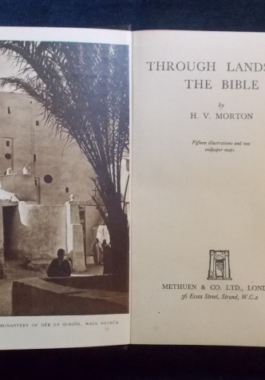 In the 1930s H.V. Morton took trips through the Middle East and recorded his observations. This book focuses on his travels through Syria, Iraq and Egypt. As he travels to ruins of past civilizations and visits places where future conflicts will take place, the reader explores the history and life of this cradle of civilization though his eyes. A precise and often witty observer, Morton provides background both historical and religious to the places he visits and makes the reader feel like a fellow traveller. Illustrated with sepia photographs.
In the 1930s H.V. Morton took trips through the Middle East and recorded his observations. This book focuses on his travels through Syria, Iraq and Egypt. As he travels to ruins of past civilizations and visits places where future conflicts will take place, the reader explores the history and life of this cradle of civilization though his eyes. A precise and often witty observer, Morton provides background both historical and religious to the places he visits and makes the reader feel like a fellow traveller. Illustrated with sepia photographs. -
 Director Robert Zemeckis and producer Steve Starkey went all out with a next-generation method to make Beowulf - a method that began and ended in the art department. A team of talented artists led by Doug Chiang created a full, rich Dark Age world by way of character sketches, costume designs, blueprints and full-colour portraits and illustrations. Then an all-star cast - Ray Winstone, Anthony Hopkins, John Malkovich, Robin Wright Penn, Brendan Gleeson, Crispin Glover, Alison Lohman and Angelina Jolie - interpreted Neil Gaiman and Roger Avary's adventurous script, their performances digitised with motion capture technology and finally, cutting edge computer wizardry brought these scenes together with Chiang's artwork brought the Dark Age of monsters and magic to complete life. This book is not just a gallery of stunning pictures - each step of the process is explained in depth, from script to the finished product.
Director Robert Zemeckis and producer Steve Starkey went all out with a next-generation method to make Beowulf - a method that began and ended in the art department. A team of talented artists led by Doug Chiang created a full, rich Dark Age world by way of character sketches, costume designs, blueprints and full-colour portraits and illustrations. Then an all-star cast - Ray Winstone, Anthony Hopkins, John Malkovich, Robin Wright Penn, Brendan Gleeson, Crispin Glover, Alison Lohman and Angelina Jolie - interpreted Neil Gaiman and Roger Avary's adventurous script, their performances digitised with motion capture technology and finally, cutting edge computer wizardry brought these scenes together with Chiang's artwork brought the Dark Age of monsters and magic to complete life. This book is not just a gallery of stunning pictures - each step of the process is explained in depth, from script to the finished product. -
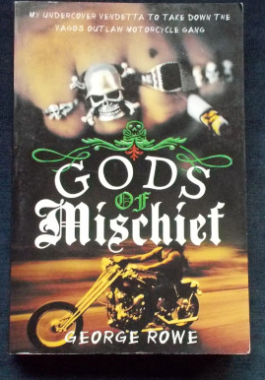 This is the high-octane, no-holds-barred, true story of a bad guy turned good who busted open one of the most violent outlaw motorcycle gangs in history. George Rowe’s gritty and harrowing story offers not only a glimpse into the violent world of the motorcycle outlaw, but a gripping tale of self-sacrifice and human redemption. Rowe had been a drug dealer, crystal meth addict, barroom brawler, and convicted felon, but when he witnessed the Vagos brutally and senselessly beat his friend over a pool game, everything changed. Rowe decided to pay back his Southern California hometown for the sins of his past by taking down the gang that was terrorizing it. He volunteered himself as an undercover informant for the Bureau of Alcohol, Tobacco, Firearms, and Explosives and vowed to dismantle the brotherhood from the inside out, becoming history’s first private citizen to voluntarily infiltrate an outlaw motorcycle gang for the U.S. government. As “Big George,” a full-patched member of the Vagos, Rowe spent three brutal years juggling a double life - riding, fighting, and nearly dying alongside the brothers who he secretly hoped to put away for good. During this time, Rowe also became entwined in a tumultuous relationship with a struggling addict named Jenna, never once revealing that he was actually working for the Feds. The road to redemption was not an easy ride. Rowe lost everything: his family, his business, his home - even his identity. To this day, under protection by the U.S. government, Rowe still looks over his shoulder, keeping watch for the brothers he put behind bars. They’ve vowed to search for him until the day they die.
This is the high-octane, no-holds-barred, true story of a bad guy turned good who busted open one of the most violent outlaw motorcycle gangs in history. George Rowe’s gritty and harrowing story offers not only a glimpse into the violent world of the motorcycle outlaw, but a gripping tale of self-sacrifice and human redemption. Rowe had been a drug dealer, crystal meth addict, barroom brawler, and convicted felon, but when he witnessed the Vagos brutally and senselessly beat his friend over a pool game, everything changed. Rowe decided to pay back his Southern California hometown for the sins of his past by taking down the gang that was terrorizing it. He volunteered himself as an undercover informant for the Bureau of Alcohol, Tobacco, Firearms, and Explosives and vowed to dismantle the brotherhood from the inside out, becoming history’s first private citizen to voluntarily infiltrate an outlaw motorcycle gang for the U.S. government. As “Big George,” a full-patched member of the Vagos, Rowe spent three brutal years juggling a double life - riding, fighting, and nearly dying alongside the brothers who he secretly hoped to put away for good. During this time, Rowe also became entwined in a tumultuous relationship with a struggling addict named Jenna, never once revealing that he was actually working for the Feds. The road to redemption was not an easy ride. Rowe lost everything: his family, his business, his home - even his identity. To this day, under protection by the U.S. government, Rowe still looks over his shoulder, keeping watch for the brothers he put behind bars. They’ve vowed to search for him until the day they die. -
 A unique study of Vietnam from prehistory to 1972 which places the Vietnam War and Western involvement in perspective. Geography and environment have had a profound effect on Vietnamese history - the Vietnamese have had to contend with the power of neighboring China, a coastline that facilitated French conquest and mountains that divide the Red River delta in the north from the Mekong River valley in the south. Also covered is the legendary origin of the Vietnamese and their emergence before the advent of Chinese influence in the 1st century B.C.; the forces that shaped the centralised Vietnamese state during the era of independence after the expulsion of the Chinese in A.D. 939; and the century of French exploitation, during which nationalist movements arose in the north and south.
A unique study of Vietnam from prehistory to 1972 which places the Vietnam War and Western involvement in perspective. Geography and environment have had a profound effect on Vietnamese history - the Vietnamese have had to contend with the power of neighboring China, a coastline that facilitated French conquest and mountains that divide the Red River delta in the north from the Mekong River valley in the south. Also covered is the legendary origin of the Vietnamese and their emergence before the advent of Chinese influence in the 1st century B.C.; the forces that shaped the centralised Vietnamese state during the era of independence after the expulsion of the Chinese in A.D. 939; and the century of French exploitation, during which nationalist movements arose in the north and south. -
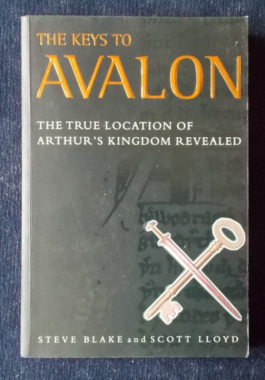
This work offers the first viable setting for the Arthurian legacy, tracing the legend back to its roots in ancient Welsh scriptures and the history of the land. Avalon is Britain's very own Atlantis - a mystical kingdom rich in myth and lore. Legends tell how the body of King Arthur was taken to Avalon, where he would wait till his nation's hour of need. The truth is that Avalon was a very real place with a turbulent history of its own. The authors of this study use neglected ancient sources, geographical clues and modern maps to take us to the heart of this realm. They uncover a remarkable landscape steeped in evidence of a bygone age. En route, they debunk the claims of other places to the name of Avalon, and literally redraw the map of Dark Age Britain, forcing us to re-examine all of our theories about this era. Ultimately, they reveal the kernel of historical truth at the heart of the Arthurian legend and unlock the borders of the lost land in which the identity of a nation has been buried - until now. Illustrated with colour and black and white photographs.
-
 Chips Rafferty became a legendary figure with an indefinable star quality and a presence that seemed, to the world at large, to be every Anzac rolled into one. He was always passionately committed to the Australian film industry. Yet for a long time he was either knocked, ognored or taken for granted in his own country. Born John William Pilbeam Goffage, the sone of a miner near Broken Hill, he became Chips Rafferty much later . Diverted from is first ambition - commercial art - Chips wandered through the back blocks from Queenland to Victoria for ten years, working as a drover, a shearer, a miner, a 'roo shooter, a fisherman and opal fossicker. The progression from extra to star to character actor began slowly, and his success in such classic films as The Overlanders, Forty Thousand Horsemen, Rats Of Tobruk and Bush Christmas made his name world-wide. Illustrated with black and white photographs.
Chips Rafferty became a legendary figure with an indefinable star quality and a presence that seemed, to the world at large, to be every Anzac rolled into one. He was always passionately committed to the Australian film industry. Yet for a long time he was either knocked, ognored or taken for granted in his own country. Born John William Pilbeam Goffage, the sone of a miner near Broken Hill, he became Chips Rafferty much later . Diverted from is first ambition - commercial art - Chips wandered through the back blocks from Queenland to Victoria for ten years, working as a drover, a shearer, a miner, a 'roo shooter, a fisherman and opal fossicker. The progression from extra to star to character actor began slowly, and his success in such classic films as The Overlanders, Forty Thousand Horsemen, Rats Of Tobruk and Bush Christmas made his name world-wide. Illustrated with black and white photographs. -
 Stories and yarns of racetrack, trials, pioneer, veteran, vintage and outback motoring in Australia and New Zealand. Contributors include: Peter Antill (The Emus Were Scary); Nino Culotta (By Taxi to King's Bloody Cross); Bruce McClaren (A Racing Driver's Story) and the Australian Automobile Clubs ( Australian Cars Go To War!);Barry Crump (Does Your Speedo Work?) among many others.
Stories and yarns of racetrack, trials, pioneer, veteran, vintage and outback motoring in Australia and New Zealand. Contributors include: Peter Antill (The Emus Were Scary); Nino Culotta (By Taxi to King's Bloody Cross); Bruce McClaren (A Racing Driver's Story) and the Australian Automobile Clubs ( Australian Cars Go To War!);Barry Crump (Does Your Speedo Work?) among many others. -
 The stories presented in this volume give unique insights into the the historical, social, spiritual and cultural beliefs of the various tribal groups. There are stories of the creation of the world, an in-depth look at the foundations of different cultures and the origins of their rituals, ceremonies and social customs, legends about animals, tales of warriors and heroes, legends and ghosts and spirits. Beautifully presented and illustrated with black and white photographs and colour depictions of artefacts.
The stories presented in this volume give unique insights into the the historical, social, spiritual and cultural beliefs of the various tribal groups. There are stories of the creation of the world, an in-depth look at the foundations of different cultures and the origins of their rituals, ceremonies and social customs, legends about animals, tales of warriors and heroes, legends and ghosts and spirits. Beautifully presented and illustrated with black and white photographs and colour depictions of artefacts. -
 Ancient Australia is often seen as a land of stagnation, and the early Australians long depicted as one of the most primitive peoples on earth. But Professor Blainey presents a different picture - in which the aboriginals were triumphant in their discovery of the land, their adaptation to it and in their mastery of its contrasting cliates, seasons and resources. Generations of aboriginals saw the great rising of the seas which isolated Australian and the sweeping changes in vegetation and wildlife. Far from being prisoners of a hostile continent, they created a lifestyle which suited their environment; established a network of overland commerce; found new medicines and drugs; developed ingenious ways of finding water in the desert; they were skilled hunters and herbalists and probably had a more varied - and more assured diet than most Europeans in the eighteenth century. Their nomadic wandering followed a logical pattern, reflecting forethought and knowledge of the land. An original and refreshing examination of the aboriginals' early complex society and economic structure.
Ancient Australia is often seen as a land of stagnation, and the early Australians long depicted as one of the most primitive peoples on earth. But Professor Blainey presents a different picture - in which the aboriginals were triumphant in their discovery of the land, their adaptation to it and in their mastery of its contrasting cliates, seasons and resources. Generations of aboriginals saw the great rising of the seas which isolated Australian and the sweeping changes in vegetation and wildlife. Far from being prisoners of a hostile continent, they created a lifestyle which suited their environment; established a network of overland commerce; found new medicines and drugs; developed ingenious ways of finding water in the desert; they were skilled hunters and herbalists and probably had a more varied - and more assured diet than most Europeans in the eighteenth century. Their nomadic wandering followed a logical pattern, reflecting forethought and knowledge of the land. An original and refreshing examination of the aboriginals' early complex society and economic structure.



